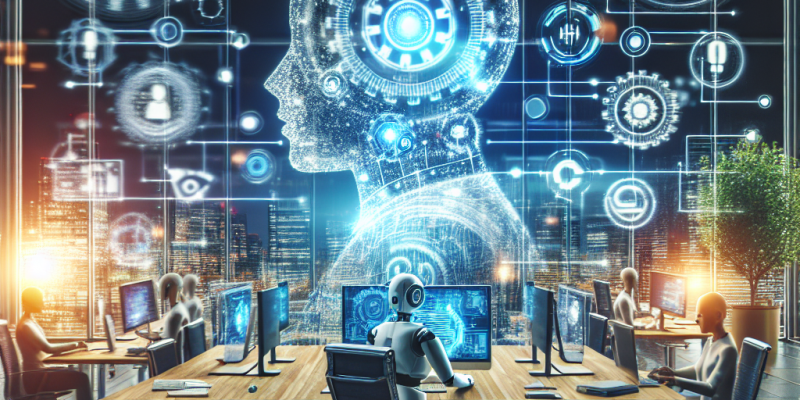AI and Automation: A Match Made for the Modern Workplace

In the rapidly evolving landscape of the 21st-century workplace, artificial intelligence (AI) and automation are not just buzzwords; they represent a profound shift in how businesses operate. These technologies are intertwined, creating synergies that enhance efficiency, optimize productivity, and redefine roles within organizations. As companies increasingly adopt AI and automation, it is essential to explore the implications, benefits, and challenges that accompany this modern collaboration.
Understanding AI and Automation
Artificial Intelligence
AI refers to the simulation of human intelligence in machines programmed to think, learn, and adapt based on data input. From natural language processing (NLP) to machine learning algorithms, AI can analyze vast datasets, recognize patterns, and make informed predictions. This technology has applications across various sectors, from customer service chatbots to advanced analytics in finance.
Automation
Automation, on the other hand, involves using technology to perform tasks with minimal human intervention. This can range from simple robotic process automation (RPA) that handles repetitive data entry tasks to complex machinery in manufacturing that operates independently. The goal is to streamline processes, reduce errors, and free up human workers for tasks that require creativity, critical thinking, and emotional intelligence.
The Synergy of AI and Automation
When AI is integrated with automation, companies can unlock unprecedented levels of efficiency. AI can enhance automation through predictive analytics, enabling systems to anticipate needs and adjust processes in real-time. For example, in a manufacturing setting, AI can predict equipment failures based on historical data, allowing for proactive maintenance and minimal downtime. In customer service, AI-driven chatbots can not only automate responses to common inquiries but also learn from interactions to improve their service over time.
Enhanced Decision-Making
One of the most significant advantages of combining AI and automation is enhanced decision-making. AI systems can analyze data far beyond human capability, identifying trends and insights that inform strategic business choices. When paired with automation processes, companies can act on these insights swiftly—optimizing supply chains, personalizing marketing strategies, and improving customer experiences.
Improved Productivity and Efficiency
Automation reduces the burden of mundane, repetitive tasks, allowing employees to redirect their energies toward more value-added activities. By integrating AI, tasks that require analysis, understanding, and adaptation can also become automated. For example, in finance, automated accounting systems powered by AI can analyze transactions for discrepancies, flagging potential issues for human review while performing the bulk of the work without human intervention.
Transforming the Workforce
New Roles and Skills
As AI and automation take over traditional roles, new job categories are emerging. Workers will increasingly be required to engage with AI systems—understanding their outputs, applying them in decision-making processes, and maintaining the technology. Roles in data analysis, AI ethics, and technology management are growing in importance. Companies must invest in upskilling their workforce to handle these new demands, promoting a culture of continuous learning.
Addressing the Human Element
Despite the automation of many tasks, the human touch remains irreplaceable in various aspects of business—particularly in leadership, creativity, and complex problem-solving. Hence, the challenge lies in striking the right balance between human and machine contributions. Companies must foster environments that encourage collaboration between AI systems and human workers, leveraging the strengths of both.
Challenges and Considerations
While the integration of AI and automation brings numerous benefits, it is not without challenges. Concerns around job displacement, data privacy, and algorithmic bias necessitate careful consideration. As automation takes over routine tasks, the workforce may face transitions requiring strategic planning and support. Furthermore, the reliance on AI systems raises questions about accountability and transparency—issues that need to be addressed to foster trust in these technologies.
Conclusion
AI and automation are undeniably a match made for the modern workplace, transforming how businesses operate and preparing them for the future. By harnessing the power of these technologies, organizations can enhance productivity, drive innovation, and improve decision-making processes.
However, the journey comes with challenges that must be navigated with foresight and empathy. For businesses to thrive in this new ecosystem, they must prioritize upskilling, promote collaboration between humans and AI, and implement ethical practices in technology deployment. As we embrace this technological revolution, the potential for more efficient, creative, and human-centered work environments is within our grasp. The future is bright—if we approach it thoughtfully.














